
In botany, a pedicel is a stem that attaches a single flower to the inflorescence. Such inflorescences are described as pedicellate.

In botany, a pedicel is a stem that attaches a single flower to the inflorescence. Such inflorescences are described as pedicellate.
Pedicel refers to a structure connecting a single flower to its inflorescence. [1] In the absence of a pedicel, the flowers are described as sessile. Pedicel is also applied to the stem of the infructescence. The word "pedicel" is derived from the Latin pediculus, meaning "little foot". [2] The stem or branch from the main stem of the inflorescence that holds a group of pedicels is called a peduncle. [3] A pedicel may be associated with a bract or bracts. [4]
In Halloween types of pumpkin or squash plants, the shape of the pedicel has received particular attention because plant breeders are trying to optimize the size and shape of the pedicel for the best "lid" for a "jack-o'-lantern". [5]


An inflorescence, in a flowering plant, is a group or cluster of flowers arranged on a stem that is composed of a main branch or a system of branches. An inflorescence is categorized on the basis of the arrangement of flowers on a main axis (peduncle) and by the timing of its flowering.
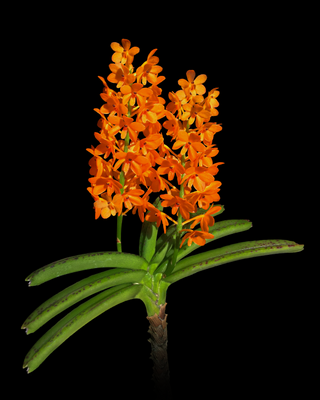
A raceme or racemoid is an unbranched, indeterminate type of inflorescence bearing flowers having short floral stalks along the shoots that bear the flowers. The oldest flowers grow close to the base and new flowers are produced as the shoot grows in height, with no predetermined growth limit. Examples of racemes occur on mustard and radish plants.

In botany, a bract is a modified or specialized leaf, especially one associated with a reproductive structure such as a flower, inflorescence axis or cone scale. Bracts are usually different from foliage leaves. They may be smaller, larger, or of a different color, shape, or texture. Typically, they also look different from the parts of the flower, such as the petals or sepals. A plant having bracts is referred to as bracteate or bracteolate, while one that lacks them is referred to as ebracteate and ebracteolate, without bracts.

In botany, a peduncle is a stalk supporting an inflorescence or a solitary flower, or, after fecundation, an infructescence or a solitary fruit. The peduncle sometimes has bracts at nodes. The main axis of an inflorescence above the peduncle is the rachis. There are no flowers on the peduncle but there are flowers on the rachis.
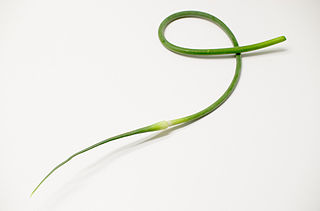
In botany, a scape is a peduncle arising from a subterranean or very compressed stem, with the lower internodes very long and hence few or no bracts except the part near the rachis or receptacle. Typically it takes the form of a long, leafless flowering stem rising directly from a bulb, rhizome, or similar subterranean or underwater structure.
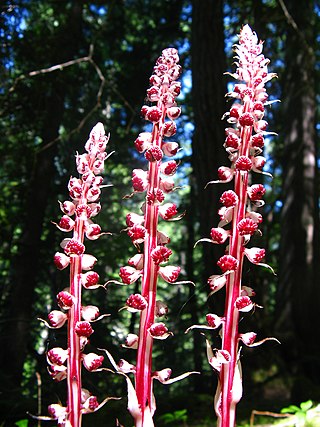
Allotropa virgata is in the family Ericaceae and is the only species of the genus Allotropa. It is a perennial plant that gets its common names from the distinct white and red or maroon stripes along its erect peduncle. A. virgata are nongreen as they lack chlorophyll, instead obtaining nutrition from neighboring green plants through a fungal intermediate.
This page provides a glossary of plant morphology. Botanists and other biologists who study plant morphology use a number of different terms to classify and identify plant organs and parts that can be observed using no more than a handheld magnifying lens. This page provides help in understanding the numerous other pages describing plants by their various taxa. The accompanying page—Plant morphology—provides an overview of the science of the external form of plants. There is also an alphabetical list: Glossary of botanical terms. In contrast, this page deals with botanical terms in a systematic manner, with some illustrations, and organized by plant anatomy and function in plant physiology.
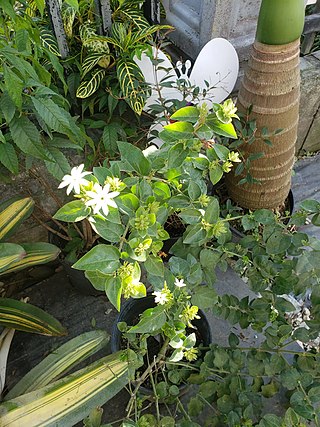
Buxus citrifolia is a species of plant in the family Buxaceae. It is found in Colombia, Panama, and Venezuela. This interesting shrub has not been known to occur in Central America, having only been collected and/or reported in Cuba, Puerto Rico, and Venezuela. Buxus citrifolia is nearly extinct and has been on the endangered list.

Dudleya farinosa is a species of succulent plant in the family Crassulaceae known by several common names, including bluff lettuce, powdery liveforever, and powdery dudleya. A coastal plant of northern California and southern Oregon, it is typically found on oceanic bluffs just directly above the reach of the waves. Its appearance is characterized by lotus-like rosettes of beveled leaves, and in summer the plant erects a tall pink to red stem densely covered in foliage, topped with branches adorned with pale yellow flowers. The green or white rosettes of this plant can be seen covering stretches of rocky coast and nearby islets.

Dudleya multicaulis is a succulent plant known by the common name manystem liveforever or many-stemmed dudleya. This Dudleya is endemic to southern California, where it is rare and seriously threatened as its habitat is altered by humans. Many occurrences of this species have been extirpated. This species is characterized by a few short, fingerlike cylindrical leaves with pointed tips, and its erect peduncle, which is topped with a branching inflorescence bearing up to 15 flowers on each long, thin branch. The flowers, which appear in late spring, have pointed yellow petals and long stamens. It is usually found on heavy clay or rocky soils and outcrops.
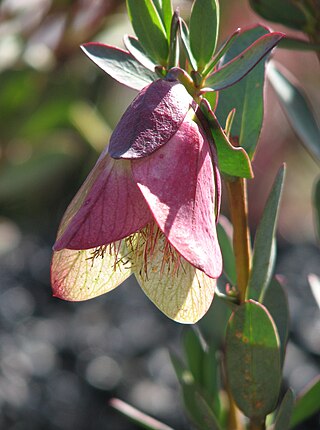
Pimelea physodes, commonly known as Qualup bell, is a species of shrub that is endemic to Western Australia. It has egg-shaped to narrow elliptical leaves and distinctive bell-like inflorescences with tiny greenish flowers surrounded by long elliptical bracts. The inflorescence resembles those of some of the only distantly-related darwinia "bells" and the bracts are a combination of red, purple, green and cream-coloured.

Nepenthes andamana is a tropical pitcher plant endemic to Phang Nga Province, Thailand, where it grows near sea level in coastal savannah and grassland. It is thought to be most closely related to N. suratensis.
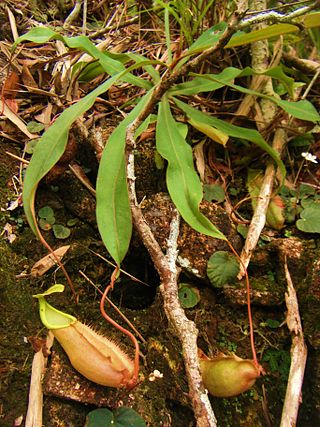
Nepenthes chang is a tropical pitcher plant endemic to the Banthad Mountains of central Thailand, where it grows at elevations of 300–600 m above sea level. It is thought to be most closely related to N. kampotiana.

Stachys arvensis is a species of flowering plant in the mint family known by the common names field woundwort and staggerweed. It is native to Europe, Western Asia, and North Africa. It is known on other continents as an introduced species and widespread weed.

Astroloba robusta is a small succulent plant of the genus Astroloba indigenous to the arid southern Cape regions of South Africa. It is the most widespread Astroloba species.

Dudleya hendrixii is a species of succulent plant known by the common name Hendrix's liveforever. It is a rare endemic restricted to undisturbed habitat near in the vicinity of Punta Colonet, Baja California, Mexico. The species is a small succulent that grows from an underground stem, producing small flowers in late spring to early summer before becoming summer deciduous and dormant. It was discovered in late 2016 by researchers from San Diego State University and the University of California, Santa Cruz, and is named in honor of the late musician Jimi Hendrix.

Hypericum majus, the greater Canadian St. John's wort, is a perennial herb native to North America. The specific epithet majus means "larger". The plant has a diploid number of 16.
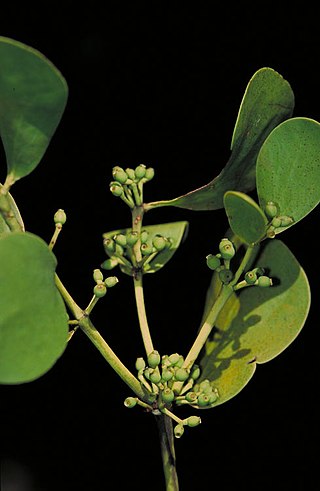
Cecarria is a monotypic genus in the family Loranthaceae. The sole species is Cecarria obtusifolia, a hemiparasitic aerial shrub.

Psittacanthus cucullaris is a species of mistletoe in the family Loranthaceae, and is native to Costa Rica, Bolivia, Colombia, Ecuador, French Guiana, Peru, Suriname, Venezuela and Brazil.

Symphyotrichum racemosum is a species of flowering plant native to parts of the United States and introduced in Canada. It is known as smooth white oldfield aster and small white aster. It is a perennial, herbaceous plant in the family Asteraceae. It is a late-summer and fall blooming flower.